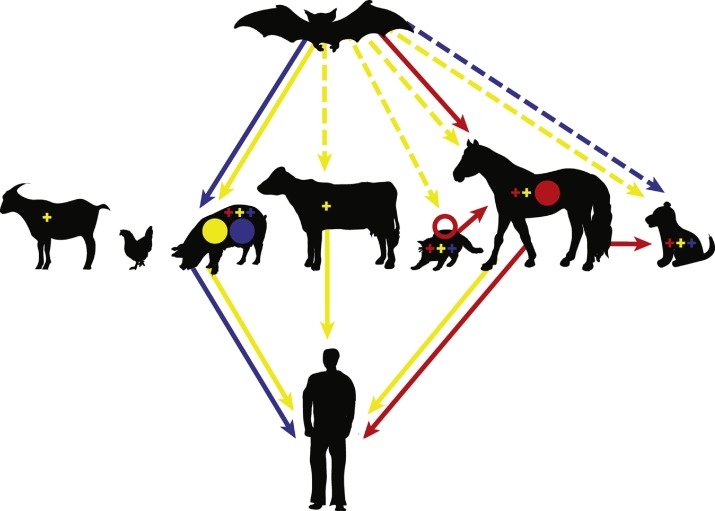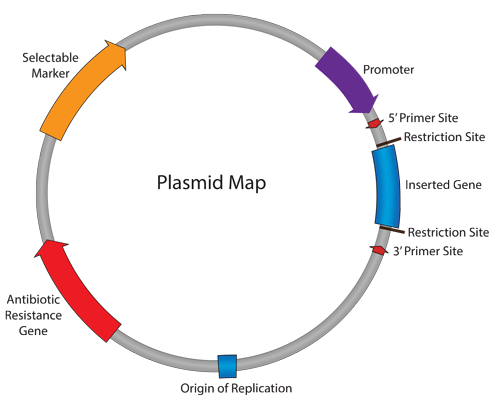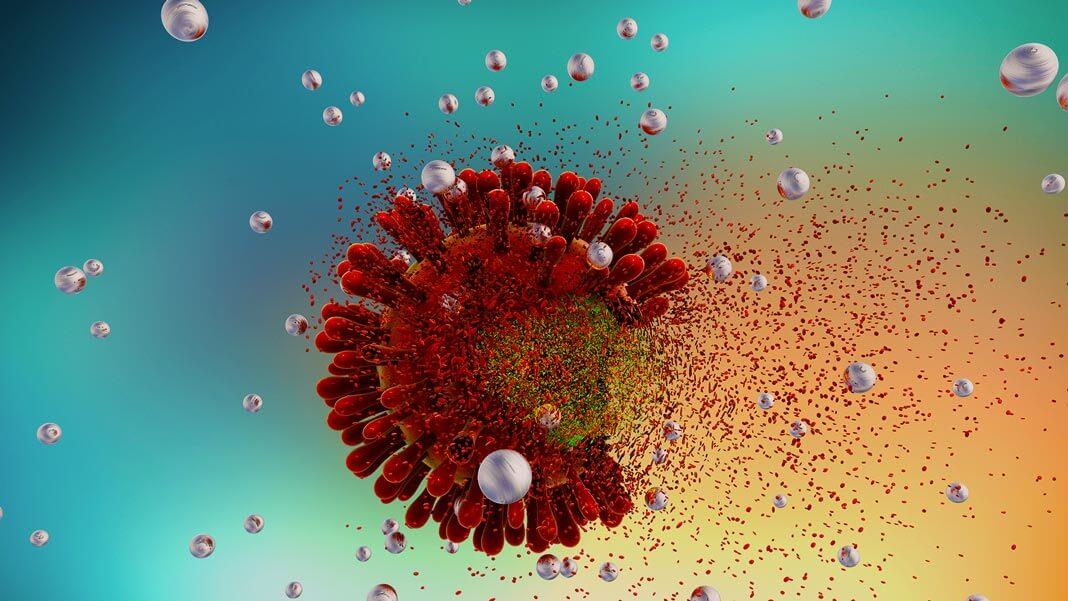Overview of Henipavirus infection
Henipavirus is a genus of negative-strand RNA viruses in the family Paramyxoviridae, order Mononegavirales containing six established species, and numerous others still under study. Henipaviruses are naturally harbored by several species of small mammals, notably pteropid fruit bats (flying foxes), microbats of several species, and shrews.
Overview
According to an article published by scientists from China and Singapore in the New England Journal of Medicine (NEJM), China’s Shandong and Henan provinces have discovered a new virus that is transmitted from animal to human. To date, about 35 infected persons have shown clinical symptoms such as fever, malaise, cough, loss of appetite, muscle pain, nausea, headache, and vomiting.
The virus found is Henipavirus, a virus that is naturally harbored by animals (also known as Langya henipavirus, LayV).
The study shows that the newly discovered Henipavirus probably came from animals and can be linked to some cases of fever, and that infected people have shown symptoms including fever, fatigue, cough, loss of appetite, muscle pain, and nausea.
Henipavirus is one of the main causes of animal disease in Pacific Asia, and both the Hendra virus (HeV) and Nipah virus (NiV) from this genus have been reported to infect humans through fruit and bats are the natural host of both viruses.
Henipavirus can lead to severe disease in animals and humans and is classified as a level 4 virus in biosafety with a mortality rate of 40-75%, according to information from the World Health Organization (WHO), this number is much higher than the rate of corona virus.
According to Professor Wang Linfa of the Emerging Infectious Diseases Program at Duke-NUS Medical School, this is an alarming issue because many viruses that exist in nature have unpredicted effects when infecting humans.
To date, no significant spatial or temporal subgrouping of Henipavirus has been found, meaning that human-to-human transmission of the virus has not been recorded, although previous reports suggest that the virus can be transmitted from person to person.
“Coronavirus will not be the last infectious disease to cause a worldwide pandemic, as new infectious diseases will have an increasing impact on people’s daily lives,” said Dr. Wang Xinyu, Deputy head of Department of Infectious Diseases of Huashan Hospital affiliated to Fudan University.
How was henipavirus discovered?
The complexity of the pathogenesis is presented in the presence of highly virulent Nipah virus (NiV) and Hendra virus (HeV). These zoonotic viruses are lethal to humans and animals and are classified in the genus Henipavirus in the family Paramyxoviridae. The HeV and NiV genomes consist of a single-stranded negative-sense RNA surrounded by a lipid envelope.
HeV was initially recognized in a 1994 outbreak in Australia and was named after the Brisbane suburb of Hendra, where a number of horses and their handlers died of lung disease with hemorrhagic manifestations
The second outbreak in Queensland, Australia also occurred in 1994 and affected 2 horses and 1 person. However, this event was only recognized in 1995, after the infected died of recurrent encephalitis.
Although NiV has caused many outbreaks since it was first detected in Sungai Nipah, it has affected more than 265 patients during outbreaks in Malaysia (1998) and Singapore (1999) with 105 confirmed deaths. Due to timely and effective actions from the government, no other cases have been reported in Malaysia and Singapore since.
In 2001, an outbreak in Bangladesh occurred with 13 people infected with NiV; 9 of the patients died. Since then, outbreaks have re-emerged almost every year in Bangladesh with a total of 17 outbreaks up to 2015. These outbreaks are recorded with high mortality: in 261 reported cases, 199 died.
Additional, localized outbreaks occurred in Siliguri, West Bengal, India, in 2001, with a mortality rate of 68%, and a repeated outbreak in Nadia, West Bengal, India in 2007 was reported that all infected cases died within 1 week of infection.
In 2014, the Philippines reported 17 confirmed human cases of NiV infection; 9 died. The latest outbreaks occurred in 2018 in Kerala, India, with a mortality rate of 91% (23 infected patients), and in 2019, after 7 days of symptom-free, the patient recovered completely.
Henipavirus transmission and clinical symptoms
For both HeV and NiV, the Pteropus fruit bat, also known as the flying fox, is considered the main source of infection. Transmission is supposed to occur from bats via saliva, urine, and feces to humans, with pigs (NiV) or horses (HeV and NiV) as intermediate hosts. Transmission from bats to intermediate hosts or humans is by eating contaminated fruit or coming into contact with contaminated secretions.

Clinical symptoms of henipavirus infection
Once infected with Henipavirus, the incubation period ranges from a few days to about 2 months depending on the route of transmission. While the average incubation period in the case of raw date palm sap consumption is 10 days, being in contact with infected pigs can lead to an incubation period of up to several weeks, the majority of patients present symptoms after 2 weeks or less.
In humans, HeV infection leads to flu-like symptoms such as fever, muscle aches, headache, cough and sore throat, before the patient develops fatal encephalitis.
NiV-infected individuals present with clinical symptoms relating to neurological disorders and acute encephalitis, whereas respiratory symptoms are found in approximately 25% of the total patients. Human-to-human transmission of viral particles is supposed to occur in the later stages of the disease in patients with NiV and HeV infections when the respiratory tract is involved in the pathogenic process.
In fact, during the 2018 outbreak in Kerala, India, all cases of nosocomial transmission were likely due to droplets of the indicated patient in the near-terminal stage and having persistent cough. This outbreak shows the importance of awareness among healthcare professionals and the public about effective preventative measures in future outbreaks.
Preventative measures
Safety precautions such as personal protective equipment and proper hygiene after being in contact with an infected patient are as important as prompt isolation and minimizing contact with the body fluids of the patient. Basic knowledge of the virus’s existence outside of intermediate hosts or the infected is essential to reduce the risk of further spread of the disease.
Currently, there is no vaccine and the treatments for patients with henipavirus infection are mainly based on supportive care. Therefore, raising awareness of risk factors, transmission prevention, and outbreak control among the healthcare professionals is the only major measure to date.
Source: Suc khoe doi song








